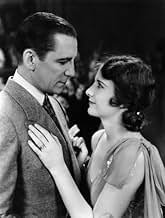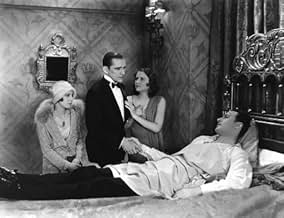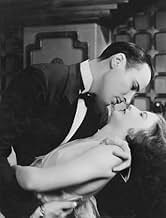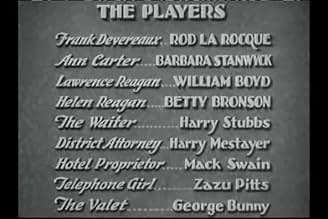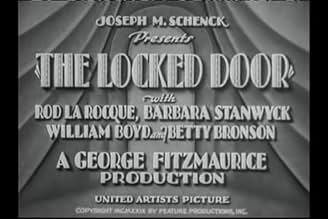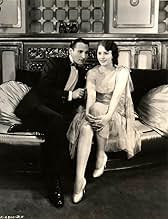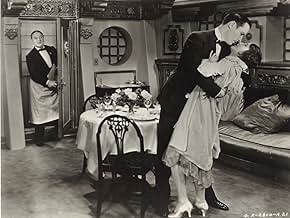AVALIAÇÃO DA IMDb
6,0/10
625
SUA AVALIAÇÃO
Adicionar um enredo no seu idiomaOn her first anniversary Ann Reagan finds that her sister-in-law is involved with a shady character from her own past, and determines to intervene.On her first anniversary Ann Reagan finds that her sister-in-law is involved with a shady character from her own past, and determines to intervene.On her first anniversary Ann Reagan finds that her sister-in-law is involved with a shady character from her own past, and determines to intervene.
- Direção
- Roteiristas
- Artistas
Zasu Pitts
- Telephone Girl
- (as Zazu Pitts)
Mary Ashcraft
- Girl on Rum Boat
- (não creditado)
Violet Bird
- Girl on Rum Boat
- (não creditado)
Earle Browne
- Bit Part
- (não creditado)
Clarence Burton
- Police Officer
- (não creditado)
Lita Chevret
- Girl on Rum Boat
- (não creditado)
Gilbert Clayton
- Bit Part
- (não creditado)
Pauline Curley
- Bit Part
- (não creditado)
Edgar Dearing
- Cop
- (não creditado)
Edward Dillon
- Bit Part
- (não creditado)
Avaliações em destaque
Other comments mention some innovative camera work in this film, but what you'll remember first is the stiff, stagy acting. And yet, you'll keep watching right up to the ridiculous deus-ex-machina ending because the movie isn't terrible enough to make you turn it off. And there are some points of interest.
One, oddly enough, is the set. Devereaux's bachelor pad has Gothic architectural details worthy of Dracula's castle. Funny that as a playboy with no visible means of support (blackmail, perhaps), he should be able to afford such a magnificent place.
Another would be Barbara Stanwyck with a horrendous 1920's hairdo, overacting like she probably never did again. I never believed that she would be so much in love with a husband who looks twice her age and has all the passion and animation of a dead codfish.
Another would be the villain of the piece, played by Rod La Roque as the ultimate lounge lizard with the a perfectly sleazy pencil-thin mustache and a leering, mocking manner to match. But I believed all that far more than I believed his change of heart at the end.
And finally, standing out like a beacon among the minor players, is Zazu Pitts as the ditsy switchboard operator. Very funny.
One, oddly enough, is the set. Devereaux's bachelor pad has Gothic architectural details worthy of Dracula's castle. Funny that as a playboy with no visible means of support (blackmail, perhaps), he should be able to afford such a magnificent place.
Another would be Barbara Stanwyck with a horrendous 1920's hairdo, overacting like she probably never did again. I never believed that she would be so much in love with a husband who looks twice her age and has all the passion and animation of a dead codfish.
Another would be the villain of the piece, played by Rod La Roque as the ultimate lounge lizard with the a perfectly sleazy pencil-thin mustache and a leering, mocking manner to match. But I believed all that far more than I believed his change of heart at the end.
And finally, standing out like a beacon among the minor players, is Zazu Pitts as the ditsy switchboard operator. Very funny.
George Fitzmaurice was one of the great commercial stylists among directors in the 1920s. He suffered an eclipse in the early talkie era but was fighting his way back into the majors when he died in 1940.
This means, of course, there are a lot of problems with this movie. The screen actors don't know how to do dialogue and most of the stage actors don't know how to turn down their performances for the intimacy of the movie camera. Barbara Stanwyck, looking very fresh-faced, is very loud in her line readings. She knows how to show her emotions beautifully already, though.
But producer Joe Schenck didn't spare any expense behind the camera, and it shows. Avant-garde cameraman Ray June handles the camera impeccably. While other directors were having their cameramen use cuts to change subjects, Fitzmaurice has June move the camera. Notice the long tracking shot at the bar in the opening sequence and the MOS shots used to fill out the sequence.
The camera-work is not fluid. It is, frankly, fairly clunky, but it is light years ahead of anyone else in the business in 1929, except possibly Mamoulian's APPLAUSE.
So while their are a lot of problems with this movie, the camera-work makes this one very superior for 1929 and Barbara Stanwyck makes it worth looking at.
This means, of course, there are a lot of problems with this movie. The screen actors don't know how to do dialogue and most of the stage actors don't know how to turn down their performances for the intimacy of the movie camera. Barbara Stanwyck, looking very fresh-faced, is very loud in her line readings. She knows how to show her emotions beautifully already, though.
But producer Joe Schenck didn't spare any expense behind the camera, and it shows. Avant-garde cameraman Ray June handles the camera impeccably. While other directors were having their cameramen use cuts to change subjects, Fitzmaurice has June move the camera. Notice the long tracking shot at the bar in the opening sequence and the MOS shots used to fill out the sequence.
The camera-work is not fluid. It is, frankly, fairly clunky, but it is light years ahead of anyone else in the business in 1929, except possibly Mamoulian's APPLAUSE.
So while their are a lot of problems with this movie, the camera-work makes this one very superior for 1929 and Barbara Stanwyck makes it worth looking at.
Barbara Stanwyck stars as Ann Carter, recently married to Lawrence Reagan (William Boyd). Their matrimonial bliss is disturbed by the appearance of Frank Devereaux (Rod La Rocque), a sleazy cad and serial womanizer who shared an embarrassing incident with Ann a year ago. When Ann learns that Devereaux has designs on Lawrence's young sister Helen (Betty Bronson), she decides to meet with Devereaux and try to keep him away from the young girl. This leads to scandal and tragedy.
Stanwyck was only 22 here, and this is her first starring role (she appeared as an uncredited showgirl in 1927's Broadway Nights). She's cute with dark hair and a baby face, and she's already exhibiting her star appeal. The Pre-Code story elements include traveling to an offshore "rum boat" (where a young Paulette Goddard is supposedly among the extras), implied forced sex, and Stanwyck spending a bit of screentime in a torn dress. La Rocque steals the film, though, as the dapper skirt-chaser who stays one step ahead of the cuckolded husbands left in his wake. He's detestable and funny at the same time.
This does show its early talkie roots though, with a dying scene that is so prolonged and talkie I'm surprised those surrounding the dying man don't start looking for a blunt instrument to end things. The overall effort is OK, but then again - Joe Schenck cut Buster Keaton loose to concentrate on films like this??? I guess you had to be there.
Stanwyck was only 22 here, and this is her first starring role (she appeared as an uncredited showgirl in 1927's Broadway Nights). She's cute with dark hair and a baby face, and she's already exhibiting her star appeal. The Pre-Code story elements include traveling to an offshore "rum boat" (where a young Paulette Goddard is supposedly among the extras), implied forced sex, and Stanwyck spending a bit of screentime in a torn dress. La Rocque steals the film, though, as the dapper skirt-chaser who stays one step ahead of the cuckolded husbands left in his wake. He's detestable and funny at the same time.
This does show its early talkie roots though, with a dying scene that is so prolonged and talkie I'm surprised those surrounding the dying man don't start looking for a blunt instrument to end things. The overall effort is OK, but then again - Joe Schenck cut Buster Keaton loose to concentrate on films like this??? I guess you had to be there.
Locked Door, The (1929)
** (out of 4)
Dry crime melodrama about a woman (Barbara Stanwyck) who gets herself arrested while on a rum boat with the lavish Frank Devereaux (Rod La Rocque). Eighteen months later she is married to another man (William Boyd) but she soon learns that his sister is now involved with Frank. This early talkie from United Artist has pretty much been forgotten with the exception that it will stand the test of time as being Stanwyck's first major role as her previous film had her in a bit role. As with many early talkies, the technology leaves a lot to be desired and I can't help but think that the director wasn't too worried with what was happening on the screen as he was making sure everyone could hear what was going on. The film is incredibly dry of any humor, suspense or drama and that's a real shame because the story is actually pretty good as all four characters get involved with a possible murder towards the end of the film. This murder happens an hour into a 74-minute film so the payoff comes rather quickly but the ending is certainly the best thing about the movie. Stanwyck comes off fairly good in her role but there's no doubt she still had some rust around the edges. La Rocque comes off incredibly over the top as if he was playing in some sort of strange comedy and I can only compare him to what people would see decades later in John Waters. Boyd is pretty good in his role and actually steals the film, although Zasu Pitts has a few good scenes as a telephone operator.
** (out of 4)
Dry crime melodrama about a woman (Barbara Stanwyck) who gets herself arrested while on a rum boat with the lavish Frank Devereaux (Rod La Rocque). Eighteen months later she is married to another man (William Boyd) but she soon learns that his sister is now involved with Frank. This early talkie from United Artist has pretty much been forgotten with the exception that it will stand the test of time as being Stanwyck's first major role as her previous film had her in a bit role. As with many early talkies, the technology leaves a lot to be desired and I can't help but think that the director wasn't too worried with what was happening on the screen as he was making sure everyone could hear what was going on. The film is incredibly dry of any humor, suspense or drama and that's a real shame because the story is actually pretty good as all four characters get involved with a possible murder towards the end of the film. This murder happens an hour into a 74-minute film so the payoff comes rather quickly but the ending is certainly the best thing about the movie. Stanwyck comes off fairly good in her role but there's no doubt she still had some rust around the edges. La Rocque comes off incredibly over the top as if he was playing in some sort of strange comedy and I can only compare him to what people would see decades later in John Waters. Boyd is pretty good in his role and actually steals the film, although Zasu Pitts has a few good scenes as a telephone operator.
Other than the fact that this was Barbara Stanwyck's second film and talkie debut, believe me there isn't any other reason to remember The Locked Door. It's a rather turgid melodrama with some stock company heroes and villains. It might very well have been a play on the Cotton Blossom, but for its urban setting.
Barbara Stanwyck showed something in this film though, she wouldn't have had the career she had if she didn't. You can definitely spot the star quality with her.
The film is based on a Broadway play by Channing Pollock that ran 187 performances during the 1919-1920 season. The subject of Prohibition was new at that time, by 1929 it was old hat. In any event it's only part of the story.
Stanwyck and Snidely Whiplash villain Rod LaRocque are on a floating gambling and drinking boat when it's raided. They both jump bail and go their separate ways, Stanwyck thanking the Deity she had no further involvement with LaRocque.
But that's not what fate has in store for her. She marries William Boyd, a widower with daughter Betty Bronson. Guess who Bronson tells dear old Dad and step mom who she's involved with.
When both Stanwyck and Boyd go to confront LaRocque, but separately, that's when the action really starts.
One thing I will say in favor of the film, the camera work reminded me a whole lot of Alfred Hitchcock's famous one set films, Rear Window and Rope, because the story takes place in the last half in LaRocque's apartment. But the hammy acting and melodramatic plot date this film terribly.
Still Barbara Stanwyck's personality certainly stands out.
Barbara Stanwyck showed something in this film though, she wouldn't have had the career she had if she didn't. You can definitely spot the star quality with her.
The film is based on a Broadway play by Channing Pollock that ran 187 performances during the 1919-1920 season. The subject of Prohibition was new at that time, by 1929 it was old hat. In any event it's only part of the story.
Stanwyck and Snidely Whiplash villain Rod LaRocque are on a floating gambling and drinking boat when it's raided. They both jump bail and go their separate ways, Stanwyck thanking the Deity she had no further involvement with LaRocque.
But that's not what fate has in store for her. She marries William Boyd, a widower with daughter Betty Bronson. Guess who Bronson tells dear old Dad and step mom who she's involved with.
When both Stanwyck and Boyd go to confront LaRocque, but separately, that's when the action really starts.
One thing I will say in favor of the film, the camera work reminded me a whole lot of Alfred Hitchcock's famous one set films, Rear Window and Rope, because the story takes place in the last half in LaRocque's apartment. But the hammy acting and melodramatic plot date this film terribly.
Still Barbara Stanwyck's personality certainly stands out.
Você sabia?
- CuriosidadesOther than one bit part, this is Barbara Stanwyck's feature film debut.
- Citações
Ann Carter: You won't gain anything by keeping me here!
Frank Devereaux: Oh, I like you in a temper. I want to hold you close, knowing you don't want to be held.
- ConexõesFeatured in Visions of Light (1992)
- Trilhas sonorasI've Got a Feeling I'm Falling
(uncredited)
Written by Fats Waller and Harry Link
First tune played on the boat
Principais escolhas
Faça login para avaliar e ver a lista de recomendações personalizadas
- How long is The Locked Door?Fornecido pela Alexa
Detalhes
- Tempo de duração1 hora 14 minutos
- Cor
- Proporção
- 1.20 : 1
Contribua para esta página
Sugerir uma alteração ou adicionar conteúdo ausente

Principal brecha
By what name was Entre Portas Fechadas (1929) officially released in Canada in English?
Responda
